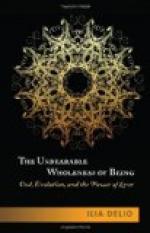Before the eighteenth century, this new erotic union did not exist as a phenomenon of civilisation, but occasionally we find it anticipated or vaguely alluded to. Some of the early German minnesingers (such as Dietmar von Aist and Kuernberg) sometimes betray, especially when speaking through the medium of a woman, sentiments prophetic of our modern sentimental ballads. The following verses by Albrecht of Johansdorf, express the reciprocity characteristic of modern love:
When two hearts are
so united
That their love can
never wane,
Then I ween no man should
blight it,
Death alone should part
the twain.
Even more modern in sentiment are the following stanzas:
This is love’s
measure:
Two hearts and one pleasure,
Two loves one love,
nor more nor less,
And both right full
of happiness.
In woe one woe,
And neither from the
other go.
Though Walter von der Vogelweide adopted the contemporaneous conception of love as the source of everything good and noble ("Tell me what is Love?”) he never quite accepted it:
Love is the ecstasy
of two fond hearts,
If both share equally,
then love is there.
More ancient evidence even is the definition of marriage by the scholastic Hugo of St. Victor, who had leanings towards mysticism: “Marriage is the friendship between man and woman,” he says.
My knowledge of the subject cannot, of course, be unexceptional, but I do not believe that personal love of the third stage, that is, the blending of both erotic elements, was quite definitely expressed before the second half of the eighteenth century. We may be justified in maintaining that the tension between sexuality and spiritual love had been slackening in the course of the centuries, that sexuality was conceived as less diabolical, and love as less celestial than heretofore; but the principle had remained unchanged. Only the female portraits of Leonardo da Vinci are deserving of special mention; the great artist was possibly the first who artistically divined, if he did not achieve, the synthesis. The exceptional position always granted to his women—particularly to his Mona Lisa—must doubtless be ascribed to this premonition. We may be certain that Leonardo not only as artist, but as lover also, was ahead of his time; but he must be regarded as an isolated instance. The three stages apply to the eroticism of man only. His emotion soared from brutality to divinity, and then gradually became human; his feeling alone has a history. The force which seized, moulded and transformed him, had no influence over woman. Compared to man, she is to-day what she was at the beginning, pure nature. Her lover has always been everything to her; never merely a means for the gratification of the senses, nor, on the other hand, a higher being to whom she looked up and whom she worshipped with a purely spiritual love; but at all




